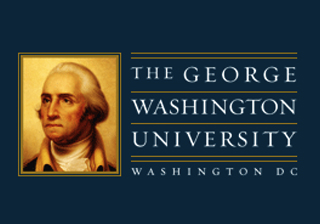
The Chen Lab for Theoretical and Computational Chemistry Department of Chemistry, George Washington University
Research in our group aims to understand the electronic structure of functional materials under various non-equilibrium conditions, such as light irradiation and bias voltage, through computer simulations.
quantum mechanics/classical electrodynamics modeling photo-induced electron transfer rate photoconductive molecular junction
We are particularly interested in developing time-dependent optical theories for the modeling of photon-electron interaction, the fundamental driving force for numerous solar energy applications, including solar cells, water splitting and carbon capture. Another line of our research focuses on the systematic design of photoconductive molecular electronics, a promising single-electron-transport device that may potentially extend Moore’s law for the era of quantum computing. A hybrid DFT/FEM (density functional theory/finite element method) approach is being actively developed to automatically account for the polarization-corrected biased potential for a closed quantum system embedded in an open region of good conductor. As a computational chemistry group that enjoys preferential access to some of the world’s fastest supercomputers, we also devote a substantial amount of efforts to implement, optimize and deploy massively scalable quantum mechanics software on a wide range of modern computer architectures.
Immediate openning for a postdoctoral position for molecular modeling of functional materials
Principal Investigator: Hanning Chen Assistant Professor, Department of Chemistry George Washington University chenhanning@gwu.edu
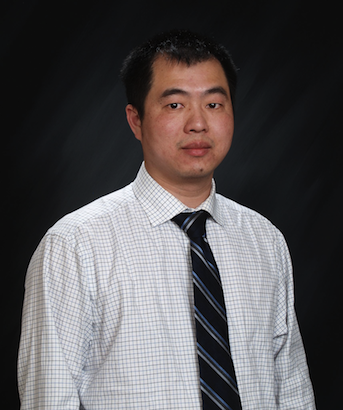
Postdoc, Northwestern University Ph.D., University of Utah M.S., University of New Orleans B.S., University of Science and Technology of China Current Members:


Edward Ko Dr. Justin E. Elenewski Jason Vargas Breona Jones Project: Spin separation Project: Quantum transport Project: Molecular Dynamics Project: Charge Transfer
The Chen group currently has several immediate openings for highly motivated Ph.D. graduate students, who are interested in chemical theories and computer simulations,
broadly defined. Previous research experience in numerical modeling of chemical and biological systems is prefered, but not required. The group members will gain the access
to some of the world's fastest supercomputers to push the limits of scientific computing. We will also enjoy the stimulating and collegiate environment that is uniquely offered
by GWU and its nearby federal laboratories. A competitive stipend is provided in addition to a full tuition waiver.
Undergraduate students are always welcome to participate in our research program. Please contact Prof. Chen to discuss your research plans.
Group Alumni:

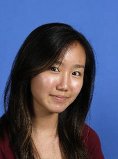
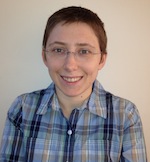
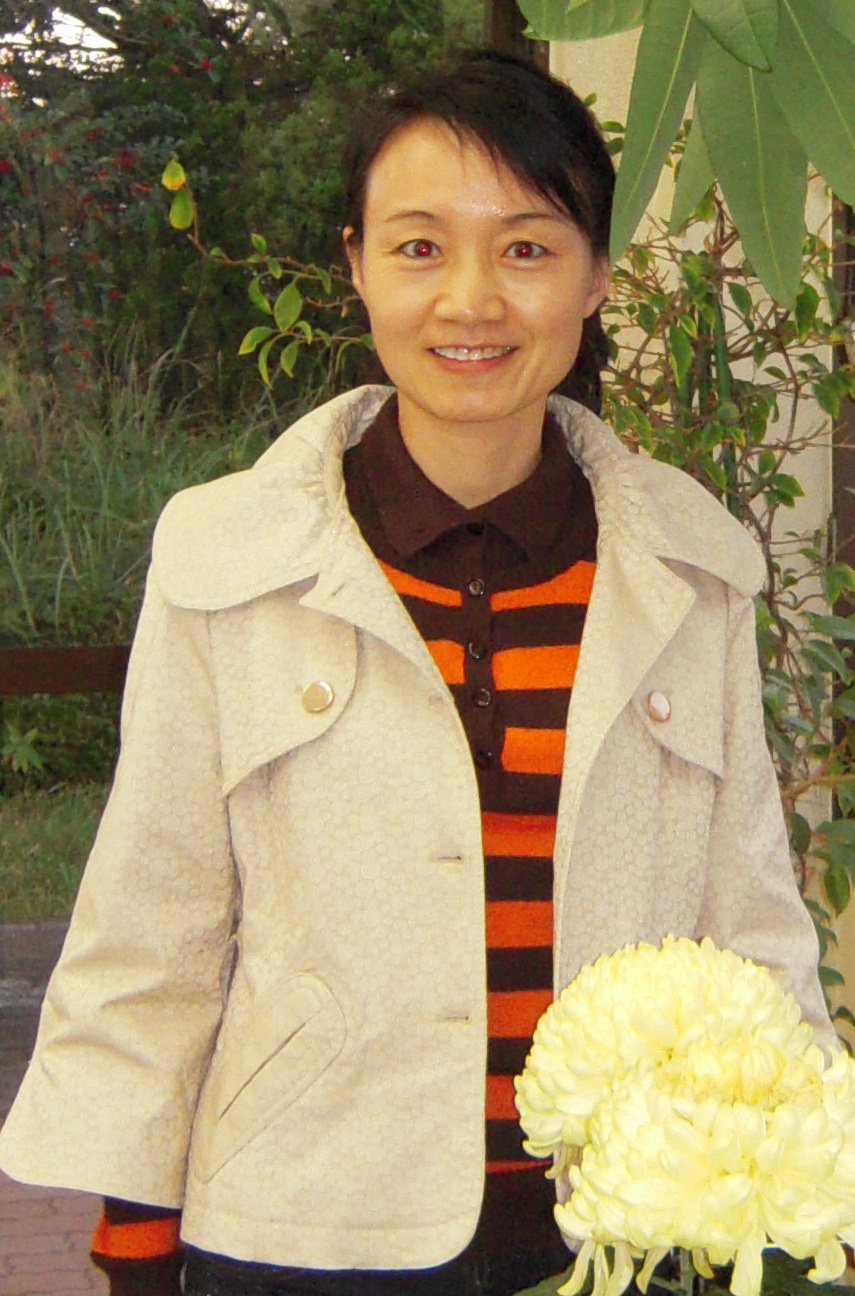 Ankit Shah Wendy Sun Ulyana S. Cubeta Dr. Likai Yan
Ankit Shah Wendy Sun Ulyana S. Cubeta Dr. Likai Yan
Peer-reviewed articles: (h-index: 18)
38. Anisotropic singlet fission in single crystalline hexacene.
D. Sun, Deng, G., Xu, B., Xu, E., Li, X., Wu, Y., Qian, Y., Zhong, Y., Nuckolls, C., Harutyunyan, A. R.,
Dai, H., Chen, G., Chen, H. and Rao., Y.
iScience, 2019, 19, 1079-1089
37. Vibronic fingerprint of singlet fission in hexacene.
G. Deng, Wei, Q., Han, J., Qian, Y., Luo, J., Harutyunyan, A. R., Chen, G., Bian, H., Chen, H., and Rao, Y.
Journal of Chemical Physics, 2019, 151, 54703-54710
36. Looking at the overlooked hole oxidation: photocatalytic transformation of organic contaminants
on graphitic carbon nitride under visible light irradiation.
Q. Zheng, Xu, E., Park, E., Chen, H., and Shuai, D.
Applied Catalysis B. Environmental. 2018, 240, 262-269
35. Dual binding configurations of subphthalocyanine on Ag(100) substrate characterized by
scanning tunneling microscopy, tip-enhanced Raman spectroscopy, and density functional theory.
P. J. Whiteman, Schultz, J. F., Porach, Z. D., Chen, H., and Jiang, N.
Journal of Physical Chemistry C. 2018, 122, 5489-5495
34. Computer simulation of singlet fission in single crystalline pentacene by functional mode vibronic theory.
J. E. Elenewski, Cubeta, U. S., Ko, E., and Chen, H.
Journal of Physical Chemistry C. 2017, 121, 11159-11165
33. Functional mode singlet fission theory. J. E. Elenewski, Cubeta, U. S., Ko, E., and Chen, H.
Journal of Physical Chemistry C. 2017, 121, 4130-4138
32. Visible-light-responsive graphitic carbon nitride (g-C3N4): rational design and photocatalytic applications for water treatment.
Q. Zheng, Durkin, D. P., Elenewski, J. E., Sun, Y. X., Banek, N. A., Hua, L., Chen, H., Wagner, M. J., Zhang, W., and Shuai, D.
ACS Envrionemental Science and Technology, 2016, 50,12938-12948
31. Functional mode hot electron transfer theory. J. E. Elenewski, Cai, J. Y., Jiang, W., and Chen, H.
Journal of Physical Chemistry C. 2016, 120, 20579-20587
30. Computational modeling of self-trapped electrons in rutile TiO2. L. Yan, Elenewski, J. E., Jiang, W., and Chen, H.
Physical Chemistry Chemical Physics. 2015, 17, 29949-29957
29. Local DNA dynamics shape mutational patterns of mononucleotide repeats in human genomes. A. Bacolla, Zhu, X., Chen, H.,
Howells, K., Cooper, D. N., and Vasquez, K. M.
Nucleic Acids Research. 2015, 43, 5065-5080
28. Migration of Holstein polarons in anatase TiO2. L. Yan and Chen, H.
Journal of Chemical Theory and Computation. 2014, 10, 4995-5001
27. Real-time transport in open quantum systems from PT-symmetric quantum mechanics. J. E. Elenewski and Chen, H.
Physical Review B. 2014, 90, 085104-085117
26. Functional mode electron transfer theory. H. Chen.
Journal of Physical Chemistry B. 2014, 118, 7586-7593
25. QM/MM study of photo-induced reduction of a tetrahedral Ag20 cluster by a Ag atom. H. Chen, Ratner, M. A. and Schatz, G. C.
Journal of Physical Chemistry C. 2014, 118, 1755-1762
24. Experimental and theoretical studies of plasmon-molecule interactions. H. Chen, Schatz, G. C., and Ratner, M. A.
Reports on Progress in Physics. 2012, 75, 96402-96436
23. Computational modeling of plasmon-enhanced light absorption in a multi-component dye sensitized solar cell. H. Chen, Blaber, M.,
Standridge, S. D., DeMarco, E., Hupp, J. T., Ratner, M. A. and Schatz, G. C.
Journal of Physical Chemistry C. 2012, 116, 10215-10221
22. Time-dependent theory of the rate of photo-induced electron transfer. H. Chen, Ratner, M. A. and Schatz, G. C.
Journal of Physical Chemistry C. 2011, 115, 18810-18821
21. Theoretical calculation of the photo-induced electron transfer rate between a gold atom and a gold cation solvated in CCl4. H. Chen,
Ratner, M. A. and Schatz, G. C.
Journal of Photochemistry and Photobiology A: Chemistry. 2011, 211, 143-147
20. Atomistic simulation and measurement of pH dependent cancer therapeutic interactions with nanodiamond carrier. A. Ashfaq, Lam, R., Chen, H.,
Lee, J., Schaffer, D., Barnard, A., Schatz, G C., Ho, D., and Liu, W. K.
Molecular Pharmaceutics. 2011, 8, 368-374
19. Enhancement of proton conductance by mutations of the selectivity filter of Aquaporin-1. H. Li, Chen, H., Steinbronn, C., Wu, B., Beitz, E.,
Zeuthen, T., and Voth, G. A.
Journal of Molecular Biology. 2011, 407, 607-620
18. Classical electrodynamics coupled to quantum mechanics for calculation of molecular optical properties: a RT-TDDFT/FDTD approach.
H. Chen, McMahon, J. M., Ratner, M. A., and Schatz, G. C.
Journal of Physical Chemistry C. 2010, 114, 14384-14392
17. Photoinduced electron transfer from rail to rung within a self-assembled oligomeric porphyrin ladder. C. She, Lee, S. J., McGarrah, J. E.,
Vura-Weis, J, Wasielewski, M. R., Chen, H., Schatz, G. C., Ratner, M. A., and Hupp, J. T.
Chemical Communications. 2010, 46, 547-549
16. Kinetics of proton migration in liquid water. H. Chen, Voth, G. A., and Agmon, N.
Journal of Physical Chemistry B. 2010, 114, 333-339
15. Efficient multistate reactive molecular dynamics approach based on short-ranged effective potentials. H. Chen, P. Liu and Voth, G. A.
Journal of Chemical Theory and Computation. 2010, 6, 3039-3047 (The authors H. Chen. and P. Liu contributed equally)
14. A computer simulation model for proton transport in liquid imidazole. H. Chen, Yan, T., and Voth, G. A.
Journal of Physical Chemistry A. 2009, 113, 4507-4517
13. Unusual hydrophobic interactions in acidic aqueous solutions. H. Chen, Xu, J., and Voth, G. A.
Journal of Physical Chemistry B. 2009, 113, 7291-7297
12. Hydrated excess proton at water-hydrophobic interfaces. S. Iuchi, Chen. H., Paesani F., and Voth, G. A.
Journal of Physical Chemistry B. 2009, 113, 4017-4030
11. Special pair dance and partner selection: elementary steps in proton transport in liquid water. O. Markovitch, Chen. H., Izvekov, S., Paesani, F.,
Voth, G. A. and Agmon, N.
Journal of Physical Chemistry B. 2008, 112, 9456-9466
10. An improved multistate empirical valence bond model for aqueous proton solvation and transport. Y. Wu, H. Chen, Wang, F., Paesani, F.,
and Voth, G. A.
Journal of Physical Chemistry B. 2008, 112, 467-482 (The authors Y. Wu and H. Chen. contributed equally)
9. Proton solvation and transport in aqueous and biomolecular systems: Insights from computer simulation. J. M. Swanson, Maupin, M., Chen. H.,
Peterson, M. K., Xu, J., Wu, Y., and Voth, G. A.
Journal of Physical Chemistry B. 2007, 111, 4300-4314
8. Proton transport behavior through the influenza A M2 channel: Insights from molecular simulation. H. Chen, Wu, Y., and Voth, G. A.
Biophysical Journal. 2007, 93, 3470-3479
7. Charge delocalization in proton channels, I: The aquaporin channels and proton blockage. H. Chen, Ilan, B., Wu, Y., Zhu, F., Schulten, K.,
and Voth, G. A.
Biophysical Journal. 2007, 92, 46-60
6. Origin of proton transport behavior from selectivity domain mutations of the aquaporin-1 channel. H. Chen, Wu, Y.,and Voth, G. A.
Biophysical Journal. 2007, 90, L73-75
5. Magnetic storage device using induced magnetic reversal of a cobalt element array. H. Chen, and Whittenburg, S. L.
Journal of Applied Physics. 2003, 94, 5278-5282
4. Phase transitions of short chains at ultralow temperature. L. Huang, He, X., Wang, Y., Chen, H., and Liang, H.
Journal of Chemical Physics. 2003, 119, 2432-2438
3. Monte Carlo simulation on the indirect exchange interactions of Co-doped ZnO film. A. F. Jalbout, Chen, H., and Whittenburg, S. L.
Applied Physics Letter. 2002, 81, 2217-2219
2. Monte Carlo simulation on thermodynamic properties of a heteropolymer chain. Y. Wang, Chen, H., and Liang, H.
Journal of Chemical Physics. 2001, 115, 3951-3956
1. First-order transition of a homopolymer chain with Lennard-Jones potential. H. Liang and Chen, H.
Journal of Chemical Physics. 2000, 113, 4469-4471
Book Chapters:
2. "Classical Electrodynamics Coupled to Quantum Mechanics for Calculation of Molecular Optical Properties: An RT-TDDFT/FDTD Approach"
H. Chen, McMahon, J. M., Ratner, M. A., and Schatz, G. C.
Advances in FDTD Computational Electrodynamics: Photonics and Nanotechnology.
Artech House, Norwood, MA, 2013, ISBN: 9781608071708
1. "Plasmon-enhanced Solar Chemistry: Electrodynamics and Quantum Mechanics"
H. Chen, Schatz, C. G., and Ratner, M. A.
Solar Energy Conversion: Dynamics of Interfacial Electron and Excitation Transfer.
Royal Society of Chemistry, Cambridge, Untied Kingdom, 2012, ISBN: 9781849733878
Dr. Hanning Chen has received the following scholar awards: Chemical Computing Group Excellence Award, American Chemical Socieity, 2008 Cheves T. Walling Outstanding Graduate Research Award, University of Utah, 2008 Student Travel Grant Award, American Biophysical Society, 2007 Henry Eyring Research Fellowship, University of Utah, 2003 The research of our group has been generously supported by Division of Chemistry, CHE-1807617/1807465, National Science Foundation, 2018-2021 Office of Science, DE-FOA-0001664, Department of Energy, 2017-2020 Columbia College Facilitating Fund, George Washington University, 2017-2018 Faculty Summer Research Fellow, Office of Naval Research, 2017 National Institute of Food and Agriculture, USDA-NIFA-AFRI-005843, Department of Agriculture, 2017-2020 ASCR Leadership Computing Challenge Award, DE-AC02-06CH11357, Department of Energy, 2016-2017 ASCR Leadership Computing Challenge Award, DE-AC02-06CH11357, Department of Energy, 2015-2016 Columbia College Facilitating Fund, George Washington University, 2015-2016 Dean's Interdisciplinary Collaboration Excellence Award, George Washington University, 2015-2016 University Facilitating Fund, George Washington University, 2013-2014 Preflight Allocation Grant, ALCF-153379, Argonne Leadership Computing Facility, 2013-2015 Regular Allocation Grant, TG-CHE130008, Texas Advanced Computing Center, 2013-2015 Startup Funds, George Washington University, 2012-2018 Startup Allocation Grant, TG-CHE120041, Texas Advanced Computing Center, 2012-2013 Research Allocation Grant, Shanghai Supercomputer Center, 2010-2013
Prof. Chen will be taking research leave during 2018-2019 academic year.
Our group has been actively involved in the development of many open-source computational chemistry packages, including CP2K, Gromacs and NWChem.
Some in-house software will also be available for download soon.
08/13/2019 Congratulations to Enshi and our collaborators for the acceptance of our paper on anisotrpic singlet fission in hexacene by iScience.
07/09/2019 Our paper about vibronic coupling in hexacene for singlet fission has been accepted by the Journal of Chemical Physics. Thank you everyone!
09/21/2018 We welcome Dr. Hang Zang, a postdoctoral fellow from University of Science and Technology of China.
09/04/2018 Congratulations to Qinming, Enshi, Grace and Prof. Shuai for our second collaborative paper that has been accepted by Applied Catalysis B.
02/22/2018 Our first collaborative article with Jiang group (University of Illinois at Chicago) has been accepted by the Journal of Physical Chemistry C.
05/01/2017 The 10th paper out of our group has been accepted by the Journal of Physical Chemistry C. Congratulations again to Justin, Ulyana and Edward!
01/26/2017 Congratulations to Justin, Ulyana and Edward for our singlet fission paper accepted by the Journal of Physical Chemistry C.
11/04/2016 A collaborative article has been published on ACS Environmental Science and Technology. Congratulations to Justin and all others.
09/01/2016 Welcome Enshi Xu, a postdoctoral fellow from Penn State !
02/23/2016 Congratulations to Justin, Jesse and Wei for the acceptance of our hot electron transfer paper accepted by the Journal of Physical Chemistry C.
10/05/2015 Congratulations to Likai and Justin for our second polaron migration article accepted by the Physical Chemistry Chemical Physics.
04/08/2015 We just publish an article on Nuclei Acids Research in collaboration with Vasquez group (U. Texas at Austin) and Cooper group (Cardiff University, UK)
09/30/2014 Congratulations to Likai for the acceptance of our polaron migration paper by the Journal of Chemical Theory and Computation!
07/23/2014 Congratulations to Justin! Our PT-symmetric quantum transport paper accepted by Physical Review B.
06/24/2014 Welcome Breona Jones, an ACS SEED scholar !
06/22/2014 Welcome Jason Vargas, a high school researcher from Wheaton High School !
06/12/2014 Our functional mode electron transfer paper accepted by the Journal of Physical Chemistry B.
01/27/2014 Welcome Dr. Justin E. Elenewski, a postdoctoral fellow from Virginia Commonwealth University
12/02/2013 Welcome Dr. Likai Yan, a visiting scholar from Northeastern Normal University of China.
05/08/2013 Congratulations to Ulyana Cubeta on winning the NSF student travel grant to attend XSEDE13 conference at San Diego, California!
02/12/2013 Welcome to Ankit Shah, our undergraduate researcher !
09/09/2012 Prof. Chen is designated by NSF as the XSEDE Campus Champion at the George Washington University.
09/07/2012 Welcome Ulyana Cubeta, who joins our lab as rotation graduate student!
08/29/2012 Welcome our high school researcher, Edward Ko!
05/01/2012 The website of Chen group is officially launched.
03/14/2012 Dr. Hanning Chen accepts an offer from the George Washington University to start as assistant professor of chemistry in the summer of 2012 .
The Chen Group is located at the historic Foggy Bottom campus of the George Washington University. we are just several blocks away from the beautiful National Mall. Address: Prof. Hanning Chen Room 4510 Science and Engineering Hall 800 22nd Street, NW Washington, DC 20052 Phone: 1-202-994-4492 Fax: 1-202-994-5677 E-mail: chenhanning@gwu.edu Web: http://www.chenlabgwu.net Everyone is welcome to visit the Chen Lab. Stop by today !